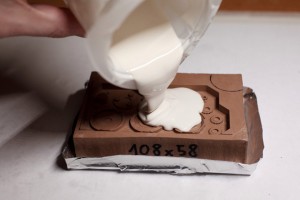RTV molding, or Room Temperature Vulcanizing, refers to the process of turning rubber solid. This is an inexpensive way to reproduce parts, while still retaining the ability to make highly detailed components.

Controlling Hardness
It’s often necessary to create parts with differing hardness depending on the application. Luckily, this is easily controlled with RTV molding and its formulas. Hardness is measured with a scale called a Durometer, as well as values called SHORE strength. The higher the number the less flexible the material.
Curing Processes
RTV rubber formation generally takes place in one of two different processes —condensation or addition curing.
- Condensation curing takes place through the evaporation of alcohol and it must be performed in a well ventilated area. This is the more common of the two processes.
- Addition curing does not use a chemical reaction to produce the finished part.
The Mold
The most important piece of the process takes place in the design of the mold. After all, this is what makes or breaks the part, right?
In the hands of a skilled engineer using rapid prototyping technologies, you can create a mold and perfect the design all within a computer software package. Keep a few of these tips in mind during this crucial design phase.
- How many parts will you need to produce? Silicone molds are less expensive, but they will not produce as many accurate reproductions. You may want a sturdier metal mold if you plan on a large run.
- Plan on some shrinkage in parts with thicker components.
- Deep holes and undercuts can cause some grief with molds, and you may need a two-part mold. On the other hand, a part with delicate components will need a one-piece mold so details aren’t lost.
Planning the design, choosing materials and producing efficiently can be a daunting list to tackle. Let the experts at PDS show you the way with our industry leading expertise.
